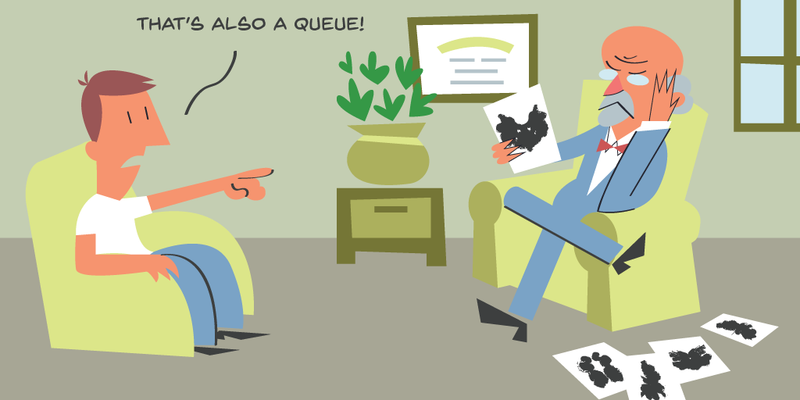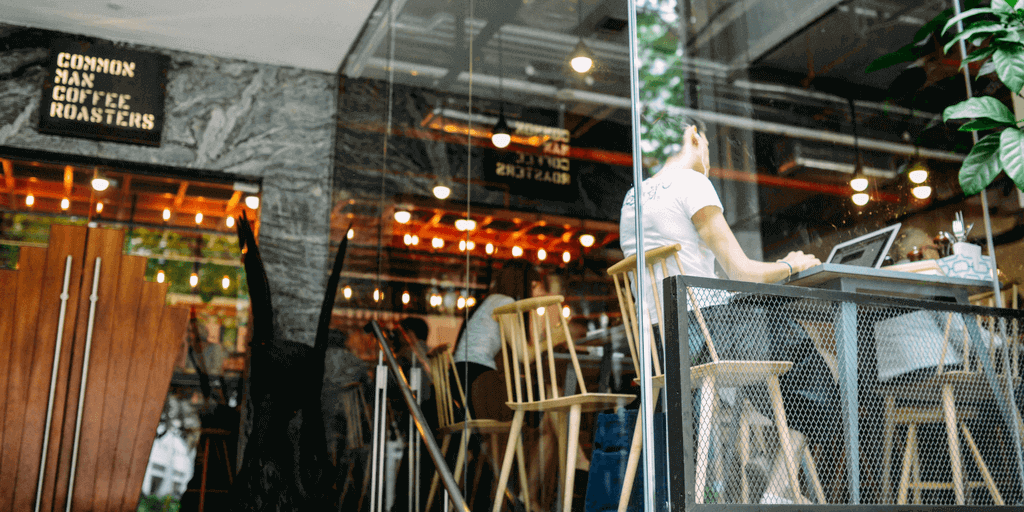Improving the queuing experience for your customers is impossible without the analytical aspect of queue line management systems. However, there’s more to good customer service than numbers.
The world’s leading expert on queues Richard Larson notes:
“Often the psychology of queuing is more important than the statistics of the wait itself.”
If you want to really nail down your customer service quality, you need to be in tune with the psychological state of your customers.
How? By applying your own experiences.
Queues and long wait times are universal, so everyone can relate to setbacks in service time or bad waiting room experience. Understanding the psychology of customers in queues is half the battle won.
Let's dive right into the psychology of queuing and how it can help your business.
Reduce wait time by occupying your customers

If you think you’ve been standing in a line for hours, chances are, your perceived wait time is longer than your actual wait time.
It’s not really about how long queues are but how long queues seem to be.
But how does it happen? What makes one wait feel that much longer than another, even if they are of equal length?
Let’s look at a practical example.
We’re all familiar with daunting airport experiences. Every step of the way, you have to spend minutes, if not hours, waiting — waiting for your luggage, for the onboarding staff, for the pilots.
So it’s no surprise when many people voice their complaints.
Houston airport was no different from other airports and has had a handful of such complaints as well. People spent no more than minutes waiting for their luggage at the arrival gates, but even these minutes felt rather long.
And with one simple decision, Houston airport decreased the number of complaints to practically zero.
Their solution?
Instead of placing arrival gates close to incoming planes, the administration moved them farther. Passengers now had to walk the distance, thus spending time on walking and not simply waiting.
The bottom line is, occupied time feels shorter than unoccupied time.
To quote philosopher William James, "Boredom results from being attentive to the passage of time itself”.
Or, in the words of every mother ever, “A watched pot never boils”.
Getting people started with a queuing system

To elaborate on the previous point, the reason why unoccupied time feels so long is because of the human need to be proactive.
The difference between a good business and a bad business is whether it caters to this need.
Think back to any good restaurant experience you’ve ever had. As soon as you take a seat, a waiter comes to you, gives you a menu and asks if you want to order something right away.
It doesn’t really affect your wait time, but it instills the feeling of you receiving the service. Your presence is acknowledged, and you feel like you’ve been “entered” into the system.
Greeting your visitors is crucial for improving your customer relationship.
This practice is not restaurant-exclusive, as other industries use it to their advantage as well. Think back to all the magazines you see lying around in a hospital’s waiting area — it’s a great way to improve customer service in lines.
Again, despite the lack of positive impact on their wait time, visitors who pick up a magazine or watch television in the lobby seem to think their wait time has been reduced. Since they had something to do, they were less focused on the actual passage of time.
Modern waiting line management systems take this phenomenon into account, by allowing customers to enter personal information when signing up for a queue.
This way, customers turn from passive recipients to active participants of queue formation. A queuing system successfully enters your customers into the process, thereby greatly reducing their perceived wait time.
Reduce waiting by reducing anxiety
Have you ever noticed that the other line always moves faster?
That’s not something that only happens to you. In fact, there’s the so-called Erma Bombeck's Law which describes this phenomenon.
It’s in human nature to second-guess everything, so the feeling of having chosen the wrong line is here to stay.
As a business, it’s extremely important for you to be upfront with your customers about the expected wait time. When queuing is handled manually, the slightest disturbance can lead to serious chaos.
It’s what they call the domino effect.
To battle the prospect of anxiety in your customers, it’s best to set the right expectations and overestimate the time required for service.
Remember the time you were blown away by the service of a restaurant because the food arrived five minutes before you expected it to?
That’s because waiters were using this effective expectation management trick — to prepare you for long waiting and then delivering on the service way before the expected deadline.
There’s no reason to think that’s being manipulative. A hundred things could go wrong in the kitchen, and it’s best to account for that possibility while promising your customer their food by a certain time.
Knowing the wait time reduces its length

It is important to keep your visitors in the loop, especially when it comes to wait times. Here’s the rub, though: There’s no word half as harmful as “Soon”.
Telling your customers you will be with them “soon” is only one peg better than telling them you won’t be talking to them at all. And even then, at least there’s certainty in the latter case.
Uncertainty in service breeds nervous anticipation, anxiety, and the feeling of powerlessness. Customers are not willing to fully commit to staying nor to walking away. As a result, they’re effectively stuck in the middle.
The worst thing for staff to do is to ignore the situation and let the customer service run its course.
From the standpoint of a customer, any amount of waiting is already unnecessary. Seeing an employee not paying any attention to you — even if they’re visibly busy — adds to the injury.
There always has to be a reason why a visitor is unattended to.
Then, there’s such thing as the appointment syndrome. Clients who arrive early for an appointment will wait until the scheduled time arrives, even if it takes long.
Once the appointment time is over, however, every additional minute feels like two.
Reduced waiting through fairness in queuing
It’s difficult making queues seem less boring than they are, and doubly so for making them seem fair.
Nothing gets your blood boiling quite as seeing someone come later and still be serviced before you. In the words of sociologists Sasser, Olsen, and Wycoff, "The feeling that somebody has successfully 'cut in front' of you causes even the most patient customer to become furious."
However, there are situations where the placement of customers is decided on the basis of their priority. This is often the case in healthcare queuing, where emergencies are handled out of the established order.
For restaurants, it’s more effective to match customers by the size of their party and the size of the available tables. Even when preparing food, they often serve two people who ordered the same meal, even if there are other visitors between them.
Richard Larson, an expert on queuing, think it’s more important to convince people they’re being treated fairly rather than try to form perfect queues.
Queuing in groups make waiting feel shorter

Disney amusement parks are a great source of customer service inspiration when developing your queuing strategies. It’s not only due to certain customer experience tricks — though there is that too — but the fact that Disney uses group thinking to its advantage.
Think back to your own shopping experiences.
Standing in line for apples all by yourself is a miserable experience. Standing in line for the Apple products, on the other hand, is another beast entirely.
There is a feeling of community at play. Waiting becomes almost a rite of passage, something to celebrate, enjoy and brag about — or, at least, that’s the idea big companies operate on.
Our perception of a queuing experience is strongly influenced by its finals moments, according to a research conducted by Ziv Carmon and Daniel Kahneman. If these moments are miserable, the overall waiting time will seem awful in retrospect.
However, if your queue experience ends on an uplifting note, customers tend to forgive or even ignore less positive bits. And nothing gets more uplifting than spending your time in a group of familiar faces.
After all, queues are a social phenomenon, so it doesn’t hurt to underscore the “social” part.
There is a lot to take from this journey into human psyche.
But however insightful you think these psychological tricks are, they're bound to fail if you don’t have your queue management figured out.
One of the most underappreciated ways to delight your customers is to surprise them. Professor David H. Maister says in his paper, The Psychology of Waiting Lines:
"If you expect a certain level of service, and perceive the service reviewed to be higher, you are a satisfied client. If you perceive the same level as before, but expected higher, you are disappointed and, consequently, a dissatisfied client.""
Waiting line management software may not exactly look like the surprise professor Maister is talking about, but the effects of its implementation are two-fold.
Not only does it help reduce customer wait and service time, but it also gives business the image of an innovative enterprise.
Want the same image for your business? Join free 14-day Qminder trial and start putting all the psychology lessons to practice.






